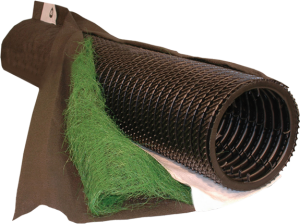Being sewer-savvy is a homeownership must if you are one of the nearly 25% of American households operating an onsite septic system. However, few homeowners realize what goes on after the downstream journey from flush to field. Do you know what critical processes make water clean enough to return safely back to the environment? Or what key components can malfunction if ignored? How does a septic system work?
Without understanding the basics of how septic systems work, you miss out on properly maintaining yours and catching problems before they become expensive repair bills.
That’s why, in this beginner’s guide, we will open the lid on septic system functionality, starting with what each major part actually does. You’ll learn what happens as wastewater goes from house plumbing through the septic tank to ultimate disposal out in the soil drain field. We’ll also explore key reasons these decentralized little treatment plants sometimes fail, plus tips to improve longevity and performance. If you don’t know a sludge judge from an effluent filter, read on to become more acquainted with one of the most useful inventions allowing comfortable country living – the ingenious septic system.
How a Septic System Works
A septic system is an underground wastewater treatment structure common in rural and suburban areas without connection to city sewer lines. Its job is to accept water and waste from your home, treat it onsite, and safely disperse it into the soil.
How do septic systems work? A typical system consists of two main parts – the septic tank and the drain field.
Inside the Septic Tank
All the wastewater from your home first enters the septic tank. This is a buried, water-tight container usually made of concrete, fiberglass, or polyethylene. Here, heavier solids settle to the bottom, forming a layer of sludge, while fats and oils float to the top as scum. Naturally occurring bacteria start breaking down and digesting the solids.
The wastewater passes from the first compartment to the second, where further settling takes place. By the end of the typical 72-hour retention time, up to 50-75% of solids have been decomposed before the clarified effluent exits the main outlet pipe and heads to the drain field.
Perforated Pipes Distribute Wastewater Underground
The drain field (also called a leach field) provides secondary treatment and allows disposal. It consists of trenches dug around 18-36 inches deep containing perforated pipes covered in gravel or stone chips. These porous materials allow wastewater to slowly seep into the ground.
As effluent trickles from the pipe perforations, microorganisms in the soil work to decompose about 90-98% of bacteria, viruses, and nutrients. Plants above then utilize these nutrients while pathogens are neutralized. By the end of the natural filtration process, the water is clean enough to re-enter local groundwater.
Factors Impacting Functionality
When properly designed, sited, sized, constructed, and maintained, septic systems have effectively treated home wastewater for decades. However, several factors affect their functionality over time:
- Household water usage – Conserving water reduces hydraulic overloading so tanks don’t overflow untreated sewage into the drain field.
- Avoiding sludge buildup – Pumping out tanks every 3-5 years limits solids carryover that can clog soil pores.
- Venting prevents toxic gases within the plumbing drainage system from building up to dangerous levels.
By learning what’s happening at each stage of wastewater treatment in your septic system, you gain insight into how to protect your investment for long-term, reliable performance. Be sure to contact your local health department for any operation and maintenance questions.
Conclusion
Understanding what’s occurring within those buried boxes and trenches helps shed light on proper septic system maintenance for over 25% of U.S. homes relying on these decentralized wastewater treatment plants. Now that you know how each component functions from the initial settling of solids to the final filtration by soil, you can better safeguard system longevity.
Be aware that periodic pumping, water conservation, and keeping sludge/scum levels in check are key for any septic system. Also, ensure all tanks, pipes, and the drainfield area remain undamaged from vehicles, tree roots, or soil erosion over time. When properly cared for, your septic system can effectively process household wastewater for decades to come. For any other operation or troubleshooting questions, be sure to contact your local health department or wastewater professional.

